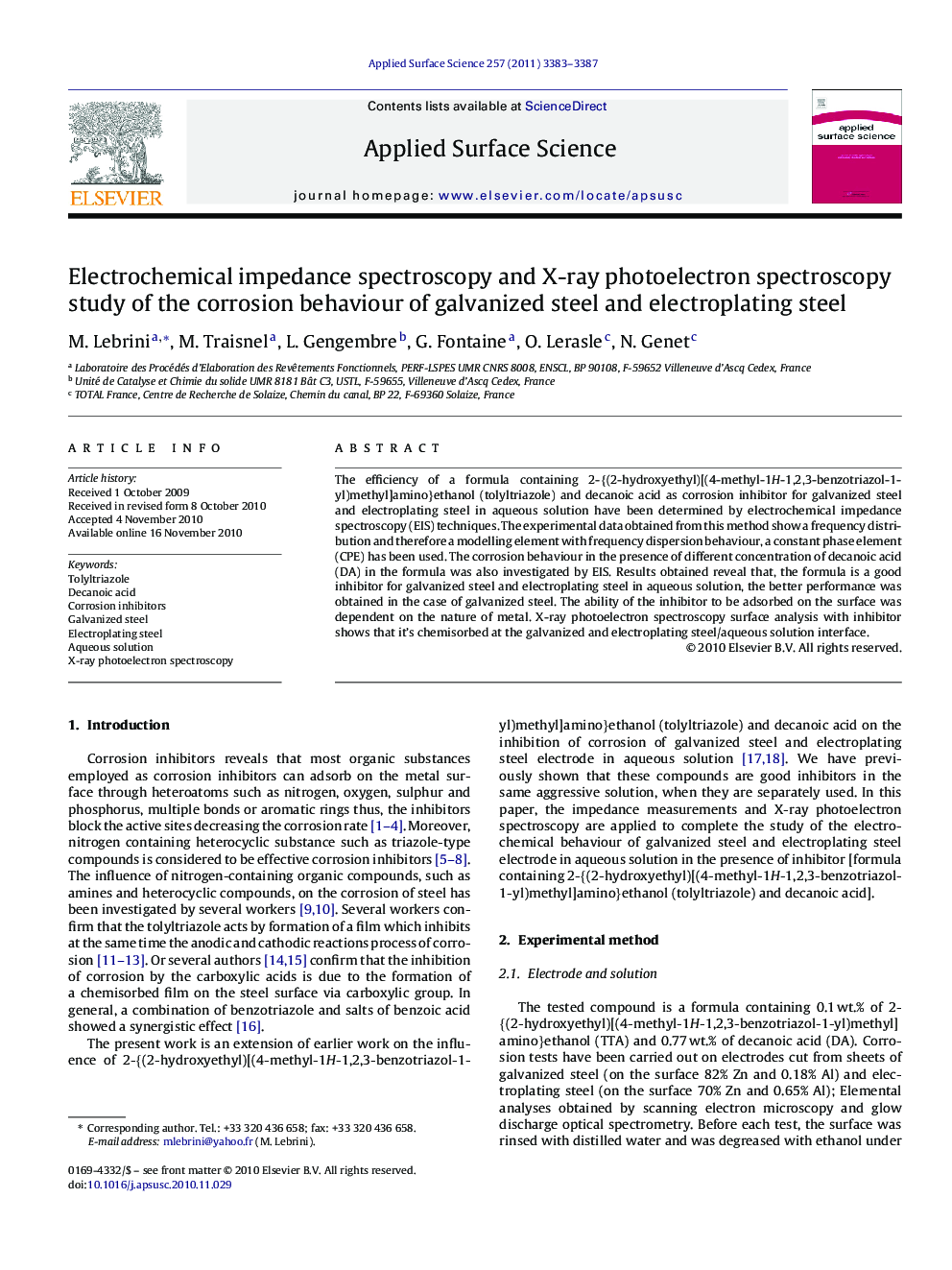| Article ID | Journal | Published Year | Pages | File Type |
|---|---|---|---|---|
| 5368052 | Applied Surface Science | 2011 | 5 Pages |
The efficiency of a formula containing 2-{(2-hydroxyethyl)[(4-methyl-1H-1,2,3-benzotriazol-1-yl)methyl]amino}ethanol (tolyltriazole) and decanoic acid as corrosion inhibitor for galvanized steel and electroplating steel in aqueous solution have been determined by electrochemical impedance spectroscopy (EIS) techniques. The experimental data obtained from this method show a frequency distribution and therefore a modelling element with frequency dispersion behaviour, a constant phase element (CPE) has been used. The corrosion behaviour in the presence of different concentration of decanoic acid (DA) in the formula was also investigated by EIS. Results obtained reveal that, the formula is a good inhibitor for galvanized steel and electroplating steel in aqueous solution, the better performance was obtained in the case of galvanized steel. The ability of the inhibitor to be adsorbed on the surface was dependent on the nature of metal. X-ray photoelectron spectroscopy surface analysis with inhibitor shows that it's chemisorbed at the galvanized and electroplating steel/aqueous solution interface.
Research highlightsⶠIn this work, a formula containing 2-{(2-hydroxyethyl)[(4-methyl-1H-1,2,3-benzotriazol-1-yl)methyl]amino}ethanol (tolyltriazole) and decanoic acid have been studied as possible corrosion inhibitor for galvanized steel and electroplating steel in aqueous solution. ⶠX-ray photoelectron spectroscopy also was carried out to complete the study of the electrochemical behaviour of galvanized steel and electroplating steel electrode in aqueous solution in the presence of inhibitor.
